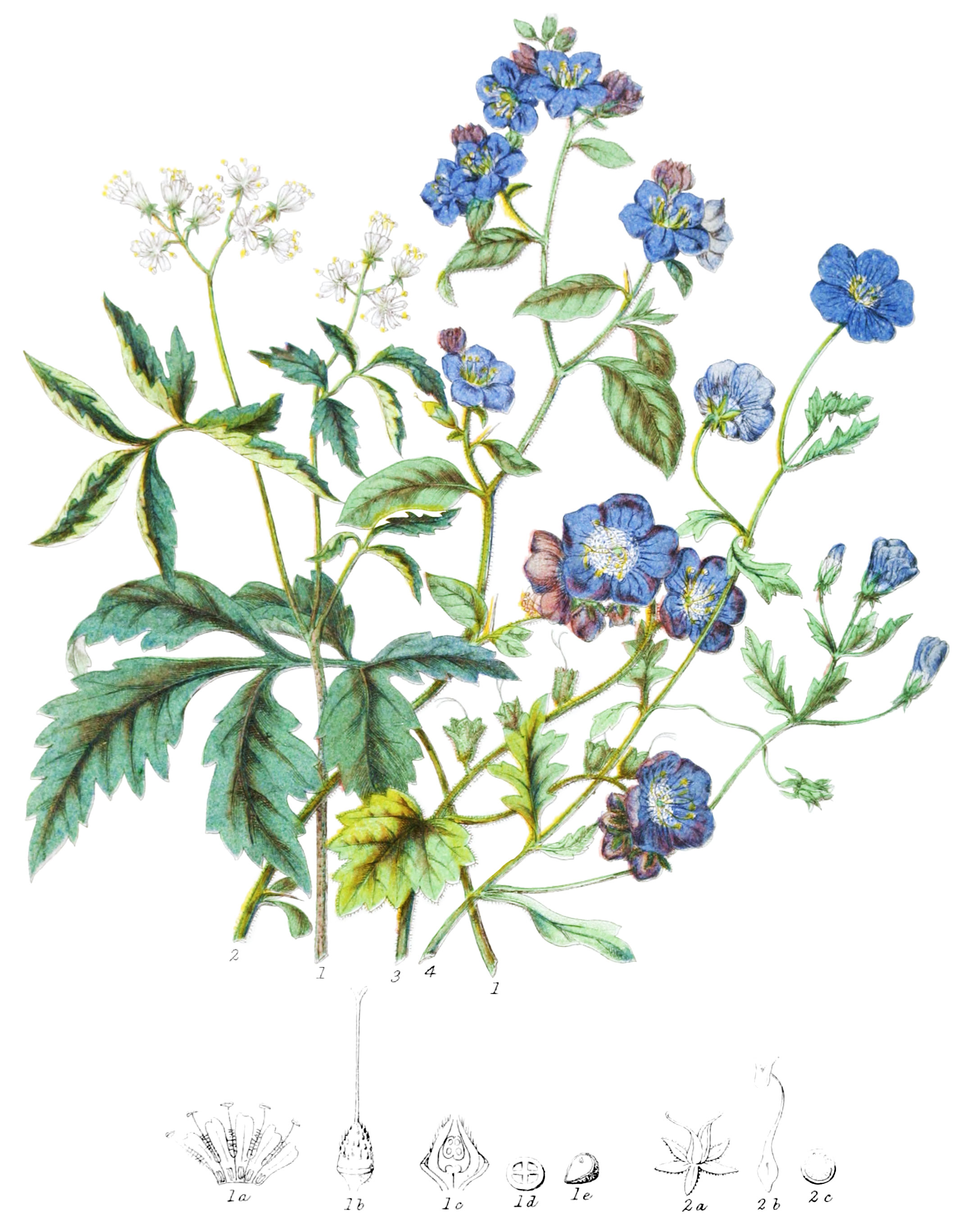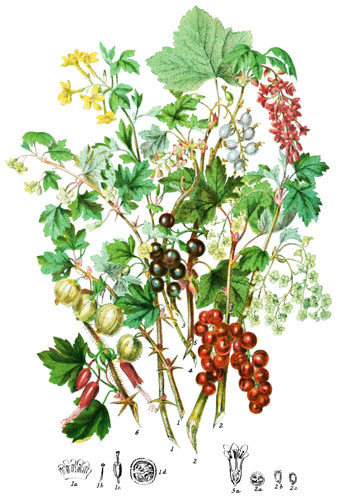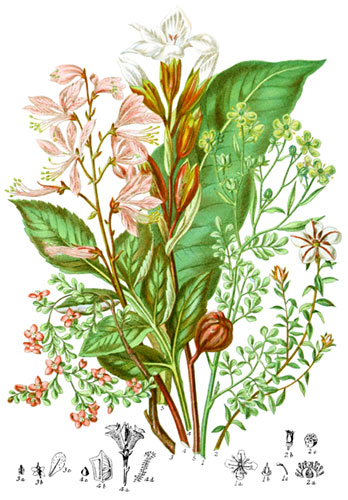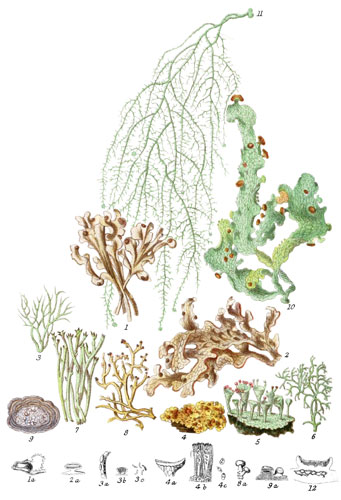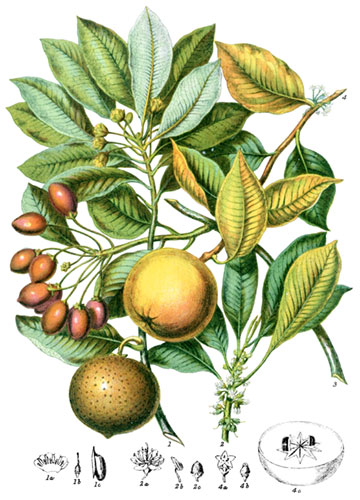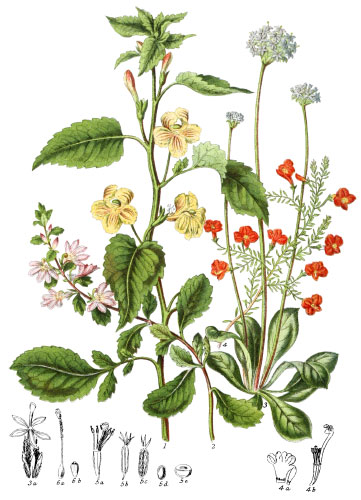Key characteristics
Small trees, burhes, and herbaceous plants, often hairy. The leaves are sometimes lobed, alternate, or the lower ones opposite. The flowers are on curling spikes, occasionally solitary and stalked, growing at the base of the leaf-stalks. The calyx is below the ovary, persistent, deeply five-cleft, sometimes having reflexed appendages between the lobes. The corolla is of one petal, placed below the ovary, regular in form, five-cleft at the top, partly campanulate. The stamens are five, alternate with the segments of the corolla, bent inwards in the bud; the anthers are two-celled, gaping longitudinally. The ovary is simple, two-celled, with two long styles and two stigmas. The fruit is a two-valved capsule, one or two-seeded; the seeds are nettled on the exterior, and contain abundant cartilaginous albumen.
This Tribe has affinity with Boraginaceæ, but is distinguished by the terminal style, and the scales at the base of the corolla.
Slightly bitter properties exist in an unimportant degree in a few of these plants.
Select plants in this order
Not all plants listed are illustrated and not all plants illustrated are listed.
- Hydrophyllum is named from the Greek word for water and leaf, on account of the small portion of water contained in the folded leaf during the early growth of the plant.
- Hydrophyllum virginicum (1) inhabits marshes in North America, known and eaten as Shawanese salad in spring when the leaves are tender: introduced into Chelsea Botanic Garden in 1739.
- H. canadense is a nearly similar speies, one of many cures for the bite of snakes, and the noxious exhalations from Rhus Toxicodendron.
- H. capitatum grows in shady swamps and rocky groves bordering the rivulets of the Upper Missouri; a bushy platn two feet high, of a succulent nature, bearing white pellucid flowers.
- Hydrolea spinosa (2) abounds in the moist marshy places on the banks of rivers in the Island of Cayenne. The whole plant is downy; the bitter properties of the leaves render them useful as a healing remedy for wounds in the West Indies: it may be occasionally seen in our conservatories, but of slender size, not attaining the vigour of growth of its native country, where it forms bushes three feet in height.
- H. zeylanica extends overt he plains of India from north to south.
- Eutoca is one of the numerous annual herbs with pretty blue flowrs, discovered lately in North America, adding considerable embellishment to our gardens during the summer months.
- E. viscida (3) is clothed with hairs, having minute viscid glands; the capsule contains any small seeds.
- E. glandulosa is a very beautiful species, with flowers of a deep blue, growing on the bituminous slate rocks of the hills abounding the Colorado river in the Upper Missouri country.
- Nemophila phaceloides (4) is also from the abundant store furnished by North America, and well suited to our climate.; though of a very delicate texture, it remains in flower on the open border until late in autumn. Several other species have lately been imported.
- Whitlavia was discovered in California by Dr. Coulter, and named after a zealous patron of the Botanic Garden at Belfast.
- W. grandiflora nearly resembles Eutoca in general growth, but the flowers are more bell-shaped.
- W. minor differs chiefly in its less size.
- Ellisia nyctalea grows amidst the Marmot burrows of the prairies of the Upper Missouri.
- Romanzovia is one of the few examples of this tribe forming part of the scanty vegetation of Arctic America.
- Codon is a native of the Cape.
- Nama belongs to both the East and West Indies.
Locations
This Tribe is scattered over the northern and extreme southern provinces of North America, rare in other countries.
Legend
- Hydrophyllum Virginicum, Virginian Water-leaf. North America.
- Flower, opened.
- Ovary and Pistil.
- Section of Ovary.
- Cross section.
- Section of Seed.
- Hydrolea spinosa, Thorny Hydrolea. South America.
- Calyx and Ovary.
- Stamen.
- Section of Ovary.
- Eutoca viscida, Clammy Eutoca. California.
- Nemophila phaceloides, Blue Nemophila. North America.
Explore more
Posters
Decorate your walls with colorful detailed posters based on Elizabeth Twining’s beautiful two-volume set from 1868.
Puzzles
Challenge yourself or someone else to assemble a puzzle of all 160 botanical illustrations.
